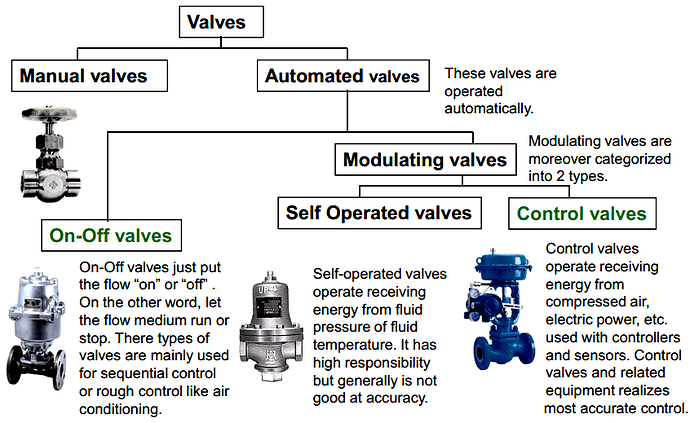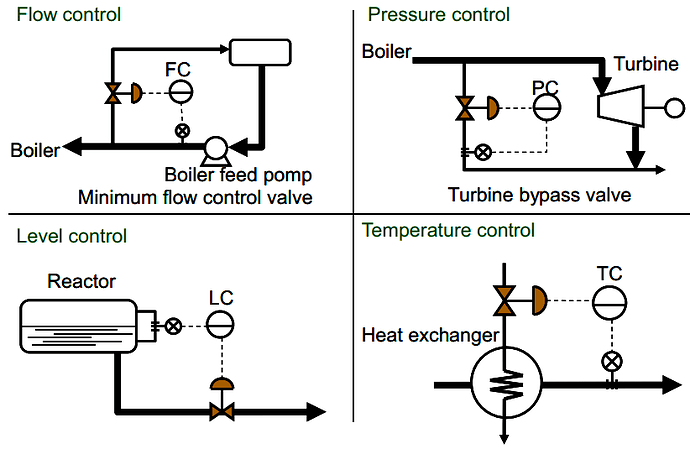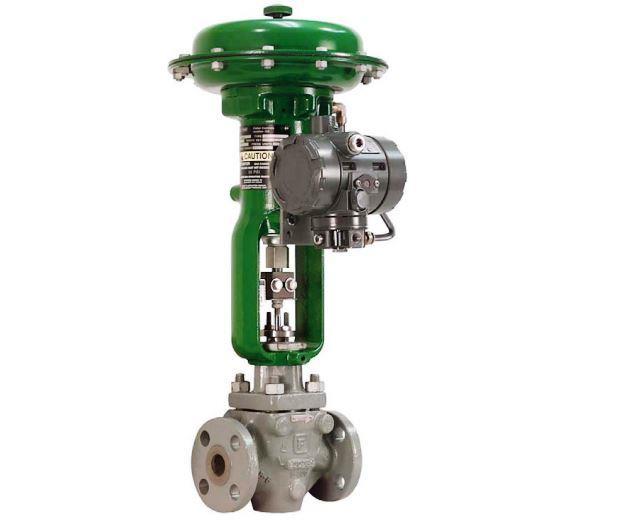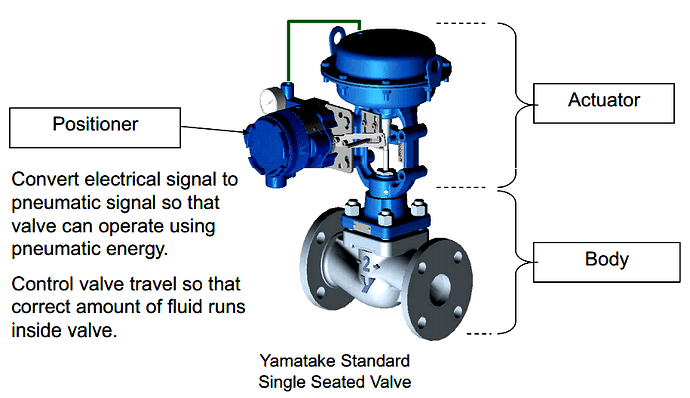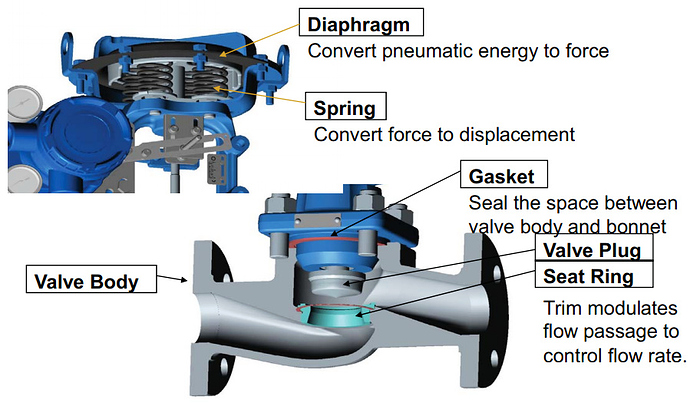Download the study material and training course on control valves which cover from basics to advanced.
The control valve manipulates a flowing fluid, such as gas, steam, water, or
chemical compounds, to compensate for the load disturbance and keep the
regulated process variable as close as possible to the desired set point.
Control Valve
The control valve assembly typically consists of the:
- Valve body
Control Valves [email protected]
Valve body - The internal trim parts
- An actuator to provide the motive power to operate the valve
- A variety of additional valve accessories, which can include positioners,
transducers, supply pressure regulators, manual operators, snubbers, or
limit switches.
Example of process control
Typical Control Valve Assembly
Component parts of Valve
Structure of actuator and valve body
Different Valve Actuators
The control valve regulates the rate of fluid flow as the position of the valve plug
or disk is changed by force from the actuator. To do this, the valve must:
- Contain the fluid without external leakage;
- Have adequate capacity for the intended service;
- Be capable of withstanding the erosive, corrosive, and temperature influences
of the process; and - Incorporate appropriate end connections to mate with adjacent pipelines and
actuator attachment means to permit the transmission of actuator thrust to the valve
plug stem or rotary shaft.
DOWNLOAD FULL COURSE
Control Valves Training Course.pdf (3.7 MB)
